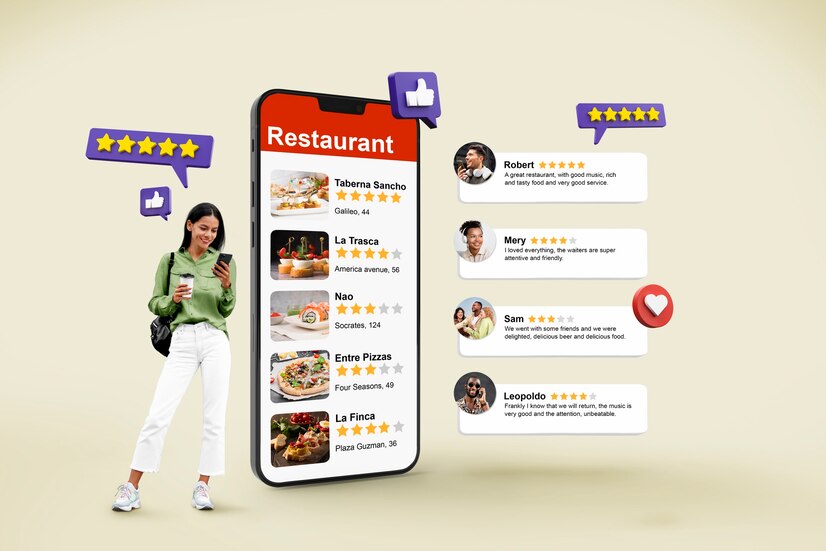If you’re a small business owner, you know how important it is to be visible in your community. Whether you run a gym, a restaurant, a spa, or even a travel agency, attracting local customers can make or break your business. The good news? There’s a powerful way to ensure people in your area find you online when they need your services: Local SEO.
In this article, we’ll dive into why local SEO matters for your business and how you can use it to make sure your company shows up in front of the right people—your neighbors, locals, and anyone searching for your services nearby.
What Exactly Is Local SEO?
At its core, local SEO is about making sure your business shows up when people search for services like yours in their area. It’s the reason your gym shows up when someone searches for “best gym near me” or why your restaurant pops up when someone looks for “restaurants in [your city].” Essentially, local SEO optimizes your online presence to improve your chances of appearing in local search results.
For example, if you’ve ever searched for something on your phone like “best burger in [your city]” or “spa near me,” the businesses that pop up are likely benefiting from strong local SEO. And if your business isn’t showing up in those results, you’re missing out on potential customers who are looking for exactly what you offer—right where you are.
Why Local SEO Is So Important for Small Businesses
As a small business, your goal is probably to bring in local customers who will walk through your door, sign up for your service, or book an appointment. And that’s where local SEO becomes a game-changer.
Here’s why local SEO is so critical:
- People Search Locally Before They Buy
- According to recent studies, nearly “46% of all Google searches” are for information about businesses in a specific area. When people need something—whether it’s a good meal, a fitness class, or a relaxing massage—they’re most likely searching for businesses near them. This means that if you’re not showing up in local search results, you’re missing out on the very customers who are most likely to convert.
- The Growth of Mobile Search
- More than half of local searches happen on mobile devices. That’s a huge opportunity for businesses to capture attention from potential customers who are actively searching while out and about. In fact, about 78% of mobile location-based searches result in an offline purchase. If your business isn’t optimized for local SEO, you’re leaving a lot of opportunities on the table.
- The Rise of “Near Me” Searches
- When people search for something “near me,” they’re looking for businesses they can visit right now. For example, if someone types “restaurants near me” or “gyms near me,” Google is going to prioritize businesses in that specific area. By optimizing your online presence for local SEO, you can make sure your business appears in those searches when potential customers are ready to act.
- Better ROI Compared to Traditional Marketing
- Local SEO is highly targeted. While traditional marketing strategies (think: flyers, radio ads, etc.) might reach a broad audience, local SEO ensures you’re getting in front of people who are already interested in the services you provide and are close enough to take action. And best of all? It’s cost-effective compared to other forms of marketing.
Key Components of Local SEO
Local SEO isn’t just a set-it-and-forget-it process. It requires ongoing effort, but the results can be powerful. So, how do you go about improving your local search rankings? Here are the most important elements to focus on:
1. Claim and Optimize Your Google My Business (GMB) Listing
This is your first step. Google My Business (GMB) is a free tool that allows you to manage how your business appears on Google Search and Maps. When people search for businesses in your area, your GMB listing is often the first thing they’ll see.
- Claim Your Listing: If you haven’t done so already, claim your GMB listing. It only takes a few minutes, and it’s essential for local SEO.
- Fill Out Your Information Completely: Make sure your business name, address, phone number, website, hours, and services are all correct. Google relies on this info to accurately show your business to people searching for your services.
- Add Photos and Updates: People love visuals, and having high-quality photos on your GMB profile can increase customer engagement. Post regular updates about your business, like new promotions, special events, or offers.
- Encourage Reviews: Positive reviews are key to building trust with potential customers and improving your local ranking. Ask your happy customers to leave reviews on your GMB page.
2. Use Local Keywords on Your Website
Optimizing your website for local SEO means including location-specific keywords that tell search engines (and potential customers) where you are. This is how you get found when people search for things like “best pizza in [city name]” or “top-rated spa in [neighborhood].”
- Target Local Keywords: Include your city, town, or neighborhood in key places like your page titles, meta descriptions, and headers. For example, instead of just using “best gym,” use “best gym in [your city].”
- Create Local Content: You can also create location-specific content on your blog or website that speaks to your community. This could include local events, news, or topics that are relevant to your customers.
3. Make Sure Your NAP is Consistent
NAP stands for Name, Address, and Phone Number, and it’s crucial for local SEO. Search engines use your NAP to ensure your business information is accurate and consistent across the web. When your NAP is listed in different places online, like on your website, social media, and other directories, make sure it’s the same everywhere.
- Consistent Listings: Ensure your business name, address, and phone number are consistent on every directory and platform, from Yelp to Facebook to your website.
4. Get More Reviews
Online reviews are one of the biggest factors in local SEO ranking. Google sees positive reviews as a signal that your business is trustworthy and valuable, and they can help improve your visibility in search results.
- Ask for Reviews: Encourage satisfied customers to leave positive reviews on your Google My Business listing, Yelp, and other review sites.
- Respond to Reviews: Show that you care about customer feedback by responding to reviews, whether they’re positive or negative.
5. Citations and Local Directories
Citations are online mentions of your business name, address, and phone number (NAP), even if there’s no link to your website. These help establish your business as legitimate and authoritative. Make sure your business is listed in relevant local directories, like Yelp, TripAdvisor, Yellow Pages, and others.
- Submit to Local Directories: Make sure your business is listed on well-known local platforms.
- Consistency is Key: Again, make sure your NAP is accurate across all these directories.
6. Ensure Your Website Is Mobile-Friendly
A huge percentage of local searches happen on mobile devices, so it’s essential that your website is mobile-friendly. A mobile-optimized website improves user experience and can help boost your local rankings. Google prioritizes mobile-friendly sites in search results, so if your site isn’t optimized for mobile, you’re already at a disadvantage.
Wrapping It Up: Local SEO Is a Must for Your Business
Local SEO is an incredibly powerful tool for small businesses looking to increase their visibility and attract more customers in their area. By optimizing your Google My Business listing, using local keywords, getting reviews, and ensuring your website is mobile-friendly, you can dramatically improve your chances of getting found online.
At the end of the day, local SEO is all about putting your business in front of the people who matter most—your local community. The more effort you put into local SEO, the more likely you are to attract new customers and grow your business in the long run.
So, get started today! The sooner you invest in local SEO, the sooner your business will be showing up in those critical local searches, helping you stand out from the competition and connect with the customers who are ready to buy.


